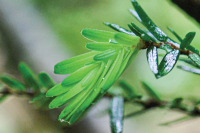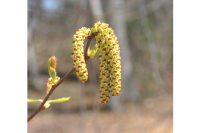Masa youth photography winners on display at arboretum
The George Masa Foundation announced that the winning photographs from the inaugural George Masa Foundation Youth Conservation Photography Prize are on display at The North Carolina Arboretum’s Baker Building through April 30.
Winners announced in George Masa Youth Conservation Photography Prize
The George Masa Foundation proudly announces the winners of the inaugural George Masa Youth Conservation Photography Prize, a competition designed to empower young photographers to celebrate and advocate for conservation.
Smokies Life publishes George Masa biography
Smokies Life has announced the publication of “George Masa: A Life Reimagined,” the first comprehensively researched biography of the visionary Japanese photographer whose dedication to art and conservation helped spur the national park movement in the Great Smoky Mountains, as well as the creation of the Appalachian Trail.
Iconic photo of George Masa ID’d
The true location of one of the most iconic photographs of George Masa has been accurately identified. The photograph, depicting Masa on a rock outcrop with his camera and a companion, was previously believed to have been taken at Graybeard Mountain. Recent findings confirm that the actual location is Blackstack Cliffs in the Cherokee National Forest.
George Masa Foundation announces Youth Conservation Photography Prize
The George Masa Foundation has announced the launch of the inaugural George Masa Youth Conservation Photography Prize. This unique competition aims to inspire middle and high school students to connect with and protect our natural world through the art of photography.
Database collects George Masa photos
A new database cataloguing the work of renowned Smokies photographer, Japan-born George Masa, is now available online.
An artist's legacy: New database contributes to study of George Masa's photography
Angelyn Whitmeyer might be the last person you would expect to contribute to ongoing research surrounding a Japanese photographer who found inspiration in the Great Smoky Mountains.
WNC Historical Association selects Brent Martin as winner of literary award
The Western North Carolina Historical has selected author Brent Martin’s “George Masa’s Wild Vision: A Japanese Immigrant Imagines Western North Carolina” for the 2022 Thomas Wolfe Memorial Literary Award.
Wild Vision: George Masa book pairs famed images with modern experiences
The 1900s were just a few years along when a young man named Masahara Iizuka stepped on American soil for the first time. Around 26 years old, he’d arrived in California to pursue a career in engineering, having studied the subject at Meiji University back in Tokyo.
One man’s vision of the Southern Appalachians
In my recent passion and ongoing interest in reviewing books by local and regional authors, I am offering here, yet another from our cache of talented writers that are close to home. In this case, it’s a book just released in the month of June by regionally heralded Hub City Press in Spartanburg, S.C., just over the North Carolina line.









